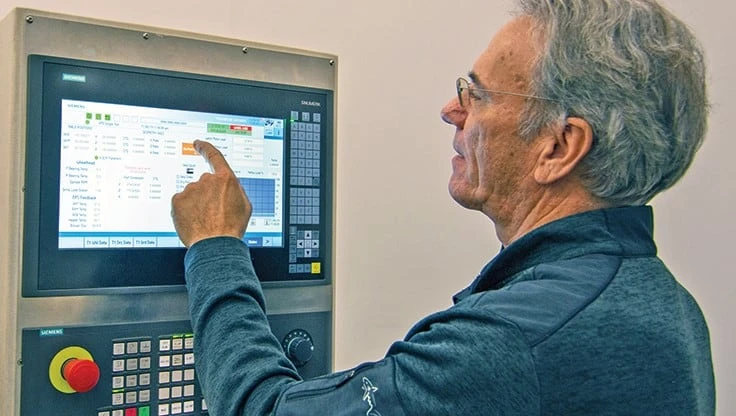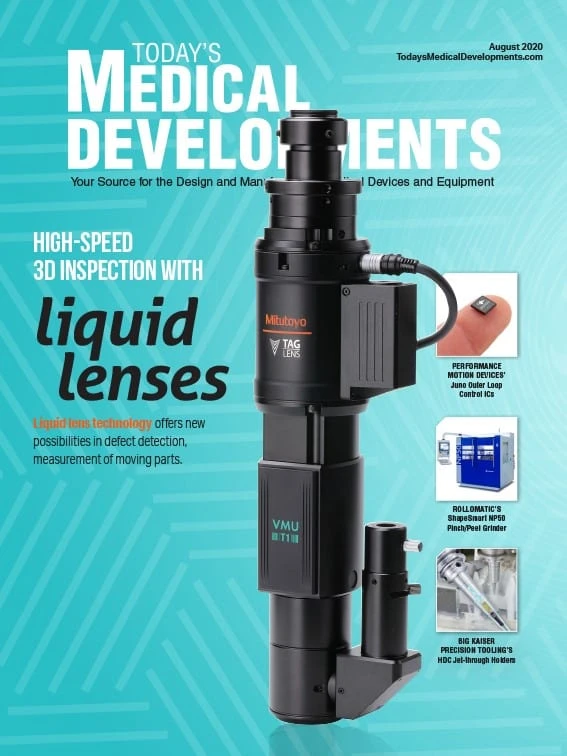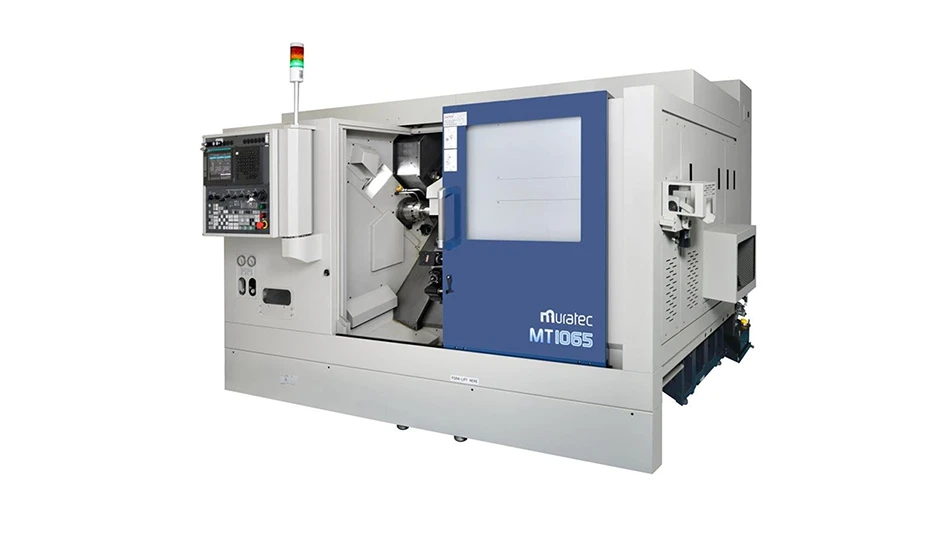
PHOTO COURTESY OF COVENTRY
An advanced positioning system that eliminates hydraulics and pneumatics can adapt to changing conditions in ID grinding and turning applications, reducing setup and cycle times while shrinking system footprint.
Coventry Associates’ (Shrewsbury, Massachusetts) 3-axis Eccentric Positioning System (EPS) is fully electric and uses less energy than pneumatic/hydraulic positioning systems while remaining cost competitive, says Coventry Associates President Craig Gardner.
The mechatronic EPS system consists of a stack of three eccentric rotary tables. Controlling the rotation of each rotary table allows users to precisely position and angle tools. The positioning accuracy and adaptive performance of the EPS system is enabled by Siemens Sinumerik CNC.
EPS has already been incorporated into an ID grinding machine where it has demonstrated three critical capabilities.
- Dress or grind any shape without using diamond rolls, special dressing attachments
- Adaptively controls normal grinding force rather than feed rate, dramatically improving material removal rate
- Compensates in real-time for deflections that result in workpiece diameter and/or taper variation, improving quality and throughput
“It has potential applications in all grinding and turning operations for the machine tool industry,” Gardner explains.

Coventry engineers plan to make EPS suitable for any machining operation that requires high positioning accuracy and controlled force.
The company’s launch product, EPS SingleTool, is designed for bearing ID grinding operations, using a single wheelhead. A shoe or chuck workhead can be used with a single-point or rotary dresser for shaping any contour. Power consumption is 10kW max. and the weight is 630kg, with 305mm x 660mm x 560mm exterior dimensions.
Coventry validated EPS SingleTool’s positioning performance using a laser interferometer for resolution, accuracy, repeatability, and straightness. Because of the unique kinematics of the EPS, all motions are 3-axis interpolated moves. Results of these measurements are shown in the table on page 16. Tests show state-of-the-art positioning capability with 52nm repeatability. The system also has high static and dynamic stiffness and can grind with large forces and make rapid motions to minimize time required to make non-grinding motions.
Coventry worked with Fraunhofer USA offices in Boston, Massachusetts, along with two key partners, Saint Gobain Abrasives and Siemens Industry Inc., to develop the initial SingleTool ID grinding application.
“Our business strategy is to bring the EPS to market as a hardware and software solution, either as a complete machine to end users or as a platform for machine builders,” Gardner concludes. “Our solution features all-electric operation, using no pneumatics or hydraulics. We typically see resolution less than 0.120µm with 0.050µm repeatability, plus linear accuracy to 0.120µm with consistent static and dynamic stiffness to a maximum grinding force of 3.34kN. Rapid motion, including acceleration and deceleration, is tracking a 203mm movement in 1.16 sec.”




Explore the August 2020 Issue
Check out more from this issue and find your next story to read.
Latest from Today's Medical Developments
- Festo Incredible Machine celebrates its premiere at the Hannover Messe
- Join us for insights on one of the hottest topics in manufacturing!
- Turnkey robotic systems are already behind the times
- You can still register for March’s Manufacturing Lunch + Learn!
- HERMES AWARD 2025 – Jury nominates three tech innovations
- Vision Engineering’s EVO Cam HALO
- How to Reduce First Article Inspection Creation Time by 70% to 90% with DISCUS Software
- FANUC America launches new robot tutorial website for all





